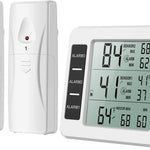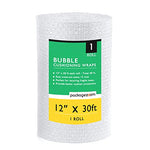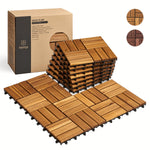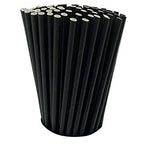You have no items in your shopping cart.
Bed bugs are a pesky problem that can turn your peaceful sleep into a nightmare. These tiny bloodsuckers have adapted to various environments, making it crucial to understand their habits and habitats. One common question that often arises is, "Do bed bugs live on wood floors?" In this article, we will delve into the fascinating world of bed bugs and uncover the truth about their affinity for wood floors.
Table of Contents
-
Understanding Bed Bugs
- What are bed bugs?
- Bed bug life cycle
- Signs of a bed bug infestation
-
Preferred Bed Bug Habitats
- Bed bugs and mattresses
- Bed bugs in furniture
- Bed bugs in cracks and crevices
-
Bed Bugs and Wood Floors
- Can bed bugs live on wood floors?
- Attracted to wood floors or not?
- Why do bed bugs prefer certain habitats?
-
Exploring Bed Bug Behavior
- Nocturnal creatures
- Seeking warmth and carbon dioxide
- Navigating different surfaces
-
Common Myths about Bed Bugs and Wood Floors
- Myth 1: Bed bugs cannot survive on wood floors
- Myth 2: Wood floors are an effective deterrent for bed bugs
- Myth 3: Bed bugs only infest mattresses and furniture
-
Preventing Bed Bug Infestations
- Regular cleaning and decluttering
- Effective use of mattress encasements
- Professional pest control services
-
What to Do If You Have Bed Bugs on Wood Floors
- Identify the extent of the infestation
- Isolate affected areas
- Seek professional assistance
-
FAQs about Bed Bugs on Wood Floors
- Can bed bugs lay eggs on wood floors?
- How long can bed bugs survive on wood floors?
- Do bed bugs hide in wooden furniture near wood floors?
- Can hardwood flooring deter bed bugs?
- Can bed bugs crawl through cracks in wood floors?
- Can bed bugs infest engineered wood floors?
- Conclusion
1. Understanding Bed Bugs
What are bed bugs?
Bed bugs are small, wingless insects that belong to the family Cimicidae. Their scientific name is Cimex lectularius. These tiny creatures feed on the blood of humans and animals, typically at night. Despite their name, bed bugs can infest various areas beyond just beds, such as furniture, clothing, and even cracks in walls.
Bed bug life cycle
To fully understand bed bugs, it's essential to grasp their life cycle. Bed bugs go through several stages: egg, nymph, and adult. Eggs are tiny and difficult to spot with the naked eye, while nymphs resemble smaller versions of adults. As nymphs mature, they molt and shed their exoskeletons several times before reaching adulthood.
Signs of a bed bug infestation
Identifying a bed bug infestation early is crucial for effective eradication. Look out for these signs:
- Bites: Bed bug bites are often itchy and appear in clusters or straight lines on exposed skin.
- Bloodstains: Rust-colored stains on bedsheets or pillowcases may indicate squashed bed bugs.
- Dark spots: Tiny black dots on mattresses, furniture, or walls could be bed bug excrement.
- Musty odor: A sweet, musty scent emanating from infested areas may be a sign of bed bugs.
2. Preferred Bed Bug Habitats
Bed bugs and mattresses
Mattresses are a prime location for bed bugs due to their proximity to their food source—us! The seams, tufts, and crevices of mattresses provide convenient hiding spots for these pests. Moreover, the warmth and carbon dioxide we emit during sleep attract them.
Bed bugs in furniture
Bed bugs are notorious for infesting upholstered furniture, such as sofas and chairs. They can squeeze into small gaps in the fabric or hide within the structure of the furniture itself. This makes sofas, recliners, and other cushioned pieces susceptible to bed bug infestations.
Bed bugs in cracks and crevices
Bed bugs have a remarkable ability to squeeze into tiny spaces, allowing them to hide in cracks and crevices throughout a room. This includes baseboards, electrical outlets, wallpaper seams, and even behind loose wallpaper. These hiding spots provide them with protection and make it challenging to eliminate an infestation without professional help.
3. Bed Bugs and Wood Floors
Can bed bugs live on wood floors?
While bed bugs prefer to hide in areas close to their food source, such as mattresses and furniture, they can live on wood floors for a short time. However, wood floors do not provide an ideal habitat for bed bugs due to their smooth and hard surface. Bed bugs have difficulty climbing smooth surfaces, making it less likely for them to infest wood floors.
Attracted to wood floors or not?
Bed bugs are not specifically attracted to wood floors. They are primarily drawn to areas where they can find easy access to their preferred hosts—humans. While bed bugs can crawl onto wood floors, they are more likely to infest furniture, mattresses, and cracks in walls.
Why do bed bugs prefer certain habitats?
Bed bugs have evolved to seek out environments that offer them warmth, darkness, and proximity to their hosts. Mattresses and furniture provide an optimal combination of these factors. While bed bugs may occasionally wander onto wood floors, they are more likely to return to their preferred habitats.
4. Exploring Bed Bug Behavior
Nocturnal creatures
Bed bugs are primarily nocturnal, meaning they are most active during the night. They have a remarkable ability to detect the carbon dioxide and body heat we emit when we sleep. These cues signal them that it's feeding time, prompting them to crawl out of their hiding spots and bite.
Seeking warmth and carbon dioxide
Bed bugs are attracted to warmth and the carbon dioxide we exhale. This is why they prefer areas near their hosts, where they can easily access a blood meal. Wood floors do not emit heat or carbon dioxide, making them less attractive to bed bugs compared to mattresses and furniture.
Navigating different surfaces
Bed bugs have specialized legs that allow them to navigate various surfaces, including wood floors. However, smooth and polished surfaces pose a challenge for them. They lack the gripping ability to crawl with ease, making wood floors less favorable for establishing a long-term infestation.
5. Common Myths about Bed Bugs and Wood Floors
Myth 1: Bed bugs cannot survive on wood floors
Contrary to popular belief, bed bugs can survive on wood floors, albeit for a limited time. While they may wander onto wood floors, they prefer areas closer to their hosts. It is essential to focus on eliminating bed bugs from mattresses, furniture, and cracks in walls, as these are their primary habitats.
Myth 2: Wood floors are an effective deterrent for bed bugs
Unfortunately, wood floors alone are not an effective deterrent for bed bugs. These resilient pests can crawl onto wood floors if they happen to wander away from their usual hiding spots. To prevent bed bug infestations, it's crucial to adopt comprehensive pest control measures that target their preferred habitats.
Myth 3: Bed bugs only infest mattresses and furniture
Although mattresses and furniture are common bed bug hiding spots, these pests can infest various other areas as well. Bed bugs are opportunistic and can hide in cracks, crevices, electrical outlets, and even behind loose wallpaper. It's important to be vigilant and conduct thorough inspections to identify all potential hiding places.
6. Preventing Bed Bug Infestations
Regular cleaning and decluttering
Keeping your living spaces clean and clutter-free is an important step in preventing bed bug infestations. Regularly vacuum your floors, including cracks and crevices, and dispose of the vacuum bag in a sealed plastic bag. Decluttering also reduces hiding spots for bed bugs, making it easier to detect and eliminate them.
Effective use of mattress encasements
Mattress encasements act as a protective barrier, preventing bed bugs from infesting your mattress. Choose encasements specifically designed to be bed bug-proof, with tight zippers and fabric that bed bugs cannot penetrate. Encasing your mattress and box spring can help minimize the risk of infestation.
Professional pest control services
If you suspect a bed bug infestation, it is crucial to seek professional pest control services. Bed bugs are notoriously difficult to eradicate, and DIY methods often fall short. Professional exterminators have the knowledge, tools, and experience to effectively eliminate bed bugs and prevent future infestations.
7. What to Do If You Have Bed Bugs on Wood Floors
Identify the extent of the infestation
Thoroughly inspect the affected area to determine the extent of the bed bug infestation. Look for live bugs, shed exoskeletons, bloodstains, and dark spots. Pay close attention to cracks, crevices, and any nearby furniture or mattresses.
Isolate affected areas
To prevent the infestation from spreading, isolate the affected areas. Move any infested furniture away from wood floors and cover them with plastic sheets or encasements. This will help contain the bed bugs and make it easier to treat the infested areas.
Seek professional assistance
Dealing with a bed bug infestation requires professional expertise. Contact a reputable pest control company with experience in treating bed bugs. They will assess the situation, develop a customized treatment plan, and safely eliminate the infestation.
8. FAQs about Bed Bugs on Wood Floors
Can bed bugs lay eggs on wood floors?
No, bed bugs do not lay eggs on wood floors. They prefer to lay their eggs in hidden locations close to their hosts, such as in mattress seams, furniture joints, or cracks in walls.
How long can bed bugs survive on wood floors?
Bed bugs can survive for several weeks to months without a blood meal. However, without suitable hiding spots and access to their hosts, their chances of survival on wood floors are significantly reduced.
Do bed bugs hide in wooden furniture near wood floors?
Yes, bed bugs can hide in wooden furniture near wood floors. They are skilled at squeezing into tiny crevices and cracks, making wooden furniture an attractive hiding spot.
Can hardwood flooring deter bed bugs?
While hardwood flooring may pose some challenges for bed bugs due to its smooth surface, it is not a guaranteed deterrent. Bed bugs can still crawl onto hardwood floors if they wander away from their preferred habitats.
Can bed bugs crawl through cracks in wood floors?
Bed bugs have the ability to crawl through small cracks and crevices, including those in wood floors. However, their movement is hindered on smooth surfaces, making it more difficult for them to establish infestations on wood floors.
Can bed bugs infest engineered wood floors?
Bed bugs can infest engineered wood floors if there are cracks or crevices where they can hide. It's important to seal any gaps in engineered wood flooring to minimize the risk of infestation.
9. Conclusion
In conclusion, while bed bugs can temporarily survive on wood floors, they prefer to infest areas closer to their hosts, such as mattresses and furniture. Wood floors are not their preferred habitat due to their smooth and hard surface. Preventing bed bug infestations requires regular cleaning, decluttering, and professional pest control services. Remember, if you suspect a bed bug infestation, it's best to seek the assistance of a professional exterminator to ensure effective eradication.








